In recent years, the number of non-native animals called "Kyon" has increased dramatically, and it has become a big problem. Problems are occurring in the Boso Peninsula in Chiba Prefecture and Izu Oshima in Tokyo, and damage to agricultural products continues.
It has a very high reproductive power, and there are concerns about the expansion of damage to agriculture and forestry as the population increases. In this article, we will explain in detail about Kyon's ecology, damage status, and countermeasures.
Kyon's ecology
Kyon is an animal classified in the Artiodactyla deer family. It is designated by the Ministry of the Environment as a "specified alien species" that may cause damage to ecosystems and agriculture, forestry and fisheries.
The body color is dark brown on the back and light brown on the abdomen, and there is a large scent gland (a gland that secretes a strong-smelling liquid) under the eye. Because this part looks like an eye, it is also called four-eyed deer (Yotsumejika).
The main difference between males and females is the presence or absence of horns.
Males have horns, which are about 12 to 15 cm long. Also, males have two black lines from the top of their eyes to the base of their horns, and they have tusks.
Females have no horns and have a diamond-shaped black band on their foreheads from above their eyes to the top of their heads. The size of the body is considerably smaller than that of the sika deer, about the same as that of a medium-sized dog (40cm in height at the shoulder, and about 8kg in weight).
Kyon Habitat
In southeastern China and Taiwan, the wild muntjac is ubiquitous (Chinese name: Huangqiang, Shanqiang). They live mainly in broadleaf forests in low mountains and are active at dawn and dusk. They are often solitary in forests and thickets, and are thought to have territories.
Originally a species that does not live in Japan, it was brought to Japan to be kept in zoos. At present, it is only confirmed in the southern part of the Boso Peninsula and Izu Oshima that it has been established in Japan.
Kion's cry
You can hear Kyon's cry in the video below. If I had to express the cry in katakana, it would be something like ``gya'' or ``gier''. There are some that make a higher-pitched "Kya" than the Kyon in this video. It is said that it resembles the barking of a dog or the screaming of a woman, but it seems that some people get a frightening impression when they hear it late at night.food and ecology
Sika deer are said to eat all the vegetation in the forest, and eat a wide variety of plants, but Kyon tends to have stronger likes and dislikes than that. Although there are differences depending on the region, the favorite food is evergreen broad-leaved trees such as Kakuremino and Aoki.
They also eat a lot of nuts, but they don't eat rice, dead leaves, and tree branches. Most of the damage caused by kyon is caused by eating leafy vegetables and sprouts of fruit trees.
The problem is their fertility. One of the reasons for their high reproductive potential is their early sexual maturity. Kyon females get pregnant as early as six months after birth, and give birth for the first time less than a year after birth. Only one litter is born per litter, but during the breeding season, they can go into heat immediately after giving birth.
In addition, the average age is about 2 years old, and it is said that most of the individuals are under 4 years old.
What is Kyon's natural enemy?
In Japan, where wolves are already extinct, Kyon has no natural enemies other than humans. There are no bears in Chiba Prefecture or Izu Oshima, and the environment is rich in food. .
As the damage caused by wild animals such as sika deer and wild boars is increasing, there is an opinion that wolves, their natural enemies, should be brought in from overseas to restore the ecosystem. However, it has not yet been introduced because it is not possible to predict the impact after introduction (for example, whether there will be damage to humans or livestock).
Damage situation in Chiba Prefecture
It is said that an individual that was originally bred at the tourist facility "Namekawa Island" in Katsuura City, Chiba Prefecture escaped and became wild, causing damage. Currently, it is distributed in nine municipalities: Kamogawa City, Katsuura City, Ichihara City, Kimitsu City, Futtsu City, Isumi City, Otaki Town, Onjuku Town, and Kyonan Town, and the distribution area is said to be expanding.
Of these, Isumi City has the largest population. It is difficult to determine exactly whether crop damage was caused by Kyon. In addition, because it is not well known, it is thought that there are many cases that are not reported as damage caused by Kyon.
Therefore, it is difficult to know the exact amount of damage caused by Kyon, but the amount of agricultural damage caused by Kyon in 2016 is estimated to be 1.32 million yen (damaged area of 1.1 hectares). This is the highest value since 2004, when statistics began to be collected, and most of the damaged items are vegetables, rice, soybeans, and strawberries.
In addition, there have been reports of damage such as damage to home gardens, barking in the middle of the night, droppings on the road and gnawing on hedges.
Damage status on Izu Oshima
Originally on Oshima, Kyon was kept in the metropolitan Oshima Park on the island, but a typhoon in the fall of 1970 broke the fence and escaped into the wild.
These kyons that have gone wild have started to damage crops. In recent years, the damage caused by Kyon has been the highest in terms of both money and area, and the special product Ashitaba (Ashitaba: a perennial plant of the Apiaceae family).
However, in 2015, while the damage caused by Angelica keiskei decreased, both the amount of damage and the damaged area were high for sweet potatoes and horticultural plants. In addition, the impact on vegetation is also recognized, and the rate of bite marks is increasing.
On the island, the "Kinran", which is designated as an endangered species by the Ministry of the Environment, and the "Ginran", which is designated as an endangered species by the Tokyo Metropolitan Government, grow naturally, but damage to these rare plants is also recognized. I'm here.
Current status of Kyon countermeasures-Hunting and capturing
In both Chiba Prefecture and Izu Oshima, we aim to eradicate it in the long term. In Chiba Prefecture, traps such as box traps and tying traps were used to capture about 2,400 of them in fiscal 2016, but their reproductive power is so strong that they cannot keep up with the situation.
In the first place, there are problems such as the fact that the ecology is not understood and the effective bait that attracts the trap to the herbivore Kyon cannot be found.
Therefore, in order to effectively set traps, Chiba Prefecture has started a new attempt to understand the ecology of Kyon. After attaching a GPS to the captured individual (mainly a female), it is released, and from the camera images that are known to multiple locations, the places where Kyon often passes are examined, and the effective trap setting location is examined.
On the other hand, the kyon countermeasures on Oshima have taken the method of enclosing areas with large populations with fences and intensively capturing the kyon. Most capture methods are firearms and seine nets. To strengthen these measures, the Tokyo Metropolitan Government has allocated a budget of approximately 280 million yen for fiscal 2016, which is approximately three times the amount from the previous fiscal year.
As a result of the above, the number of catches on Oshima in fiscal 2016 was the highest ever. Furthermore, in fiscal 2017, we have increased the budget to about 405 million yen, an increase of about 45% compared to the previous year. However, the Kyon population is estimated to continue to grow at a rate of 20-30% per year, even with eradication efforts, and is far from eradicated.
It is reported that it is necessary to increase the capture pressure several times more than the current level just to suppress the increase. (Reference: Tokyo Metropolitan Government website )
Is it delicious to eat? Kyon meat
Isumi City is already promoting the effective use of Kyon leather, and it is thought that it can also be used as game meat.
In Japan, it is not well known as gibier, but it is widely eaten in Taiwan and other countries, and the meat is tender and delicious. There are many opinions that it is more delicious than bland venison. It has a unique richness depending on the part and meat quality, but it has little peculiarity and goes well with stir-fried dishes. If it is distributed as gibier, it is expected to become popular.
Meat from wild animals has the risk of food poisoning due to bacteria, viruses, and parasites, so it is recommended that you eat meat that has been thoroughly cooked so that the meat reaches its core.
I've heard of cases where it's eaten as sashimi, but it's best to avoid it for hygiene reasons. If you have the opportunity to cook at home, please be careful about handling, such as disinfecting the equipment that comes in contact with it.

 箱罠
箱罠
 くくり罠
くくり罠
 パーツ類
パーツ類
 電気柵
電気柵
 自作キット
自作キット
 防獣グッズ
防獣グッズ
 監視カメラ
監視カメラ


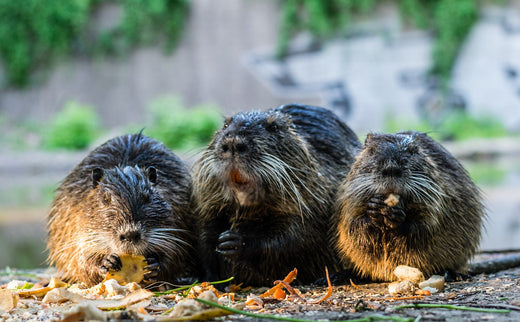
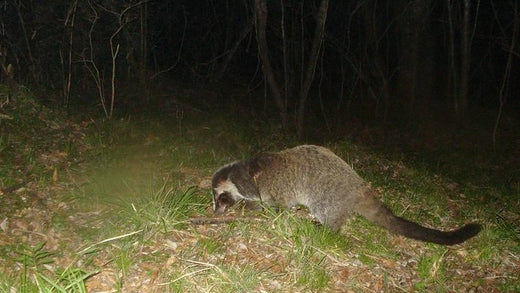

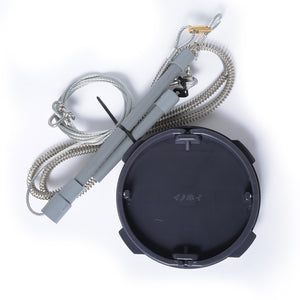
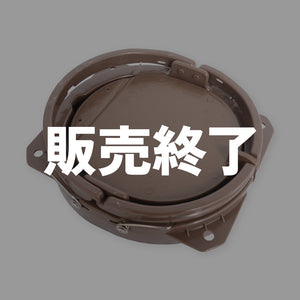
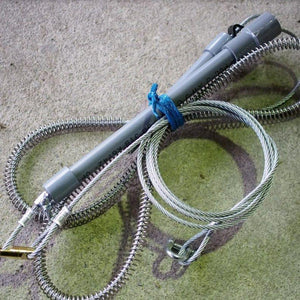
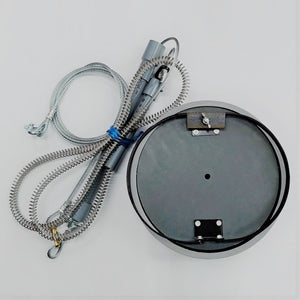
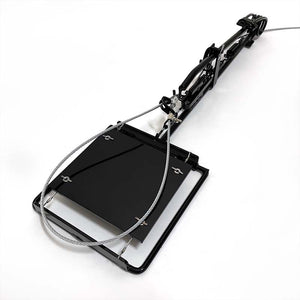
 box trap
box trap
 tying trap
tying trap
 enclosure trap
enclosure trap
 Prevention and avoidance goods
Prevention and avoidance goods
 electric fence
electric fence
 trap surveillance camera
trap surveillance camera
 transportation goods
transportation goods
 Trap detection sensor
Trap detection sensor
 hunting supplies
hunting supplies
 game cookware
game cookware
 hunting books
hunting books
 Anti-bird goods
Anti-bird goods
 Agricultural materials/machinery
Agricultural materials/machinery
 Gibier
Gibier
 boar
boar
 deer
deer
 Kyon
Kyon
 monkey
monkey
 raccoon
raccoon
 Badger
Badger
 palm civet
palm civet
 raccoon dog
raccoon dog
 nutria
nutria
 mouse or rat
mouse or rat
 Mole
Mole
 bear
bear
 pigeon
pigeon
 Crow
Crow







